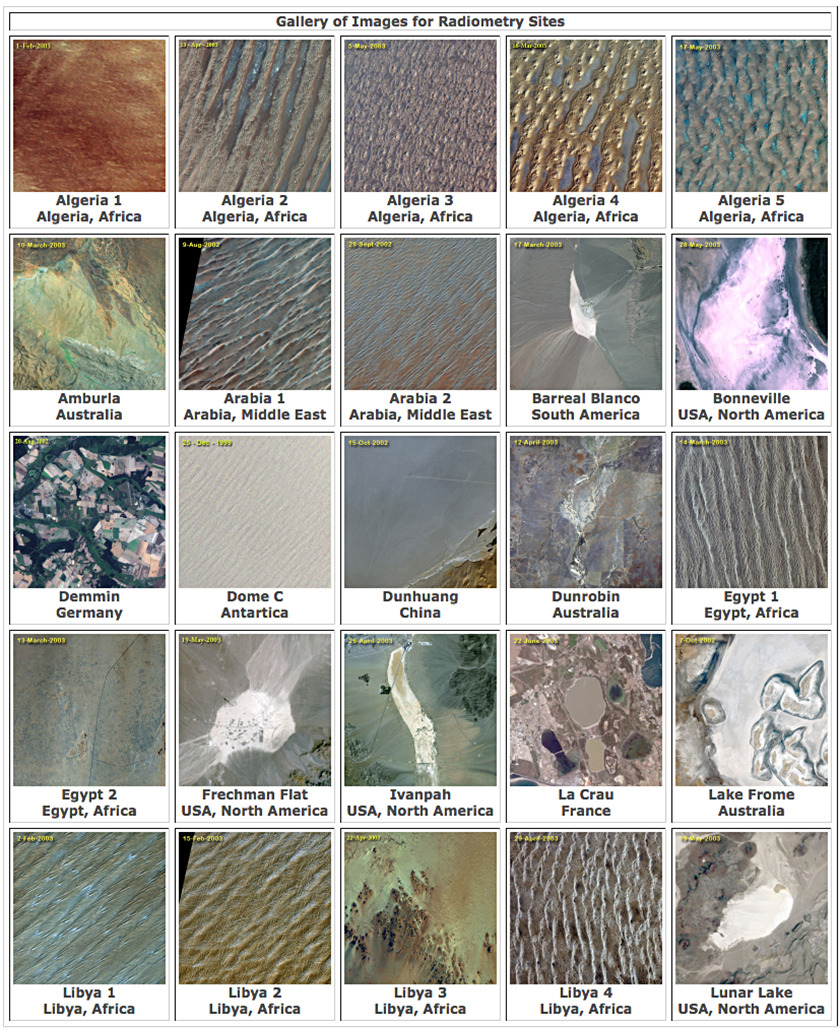INFOGRAPHICS FOR SATELLITES.
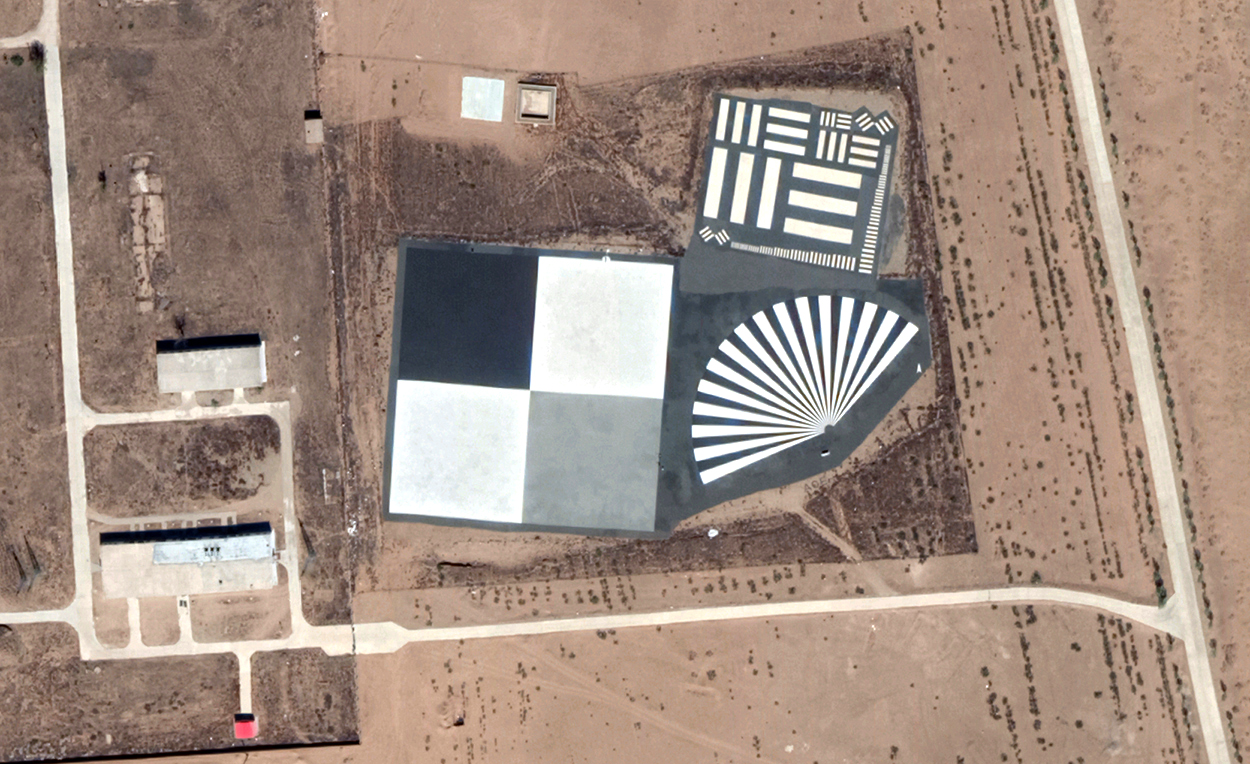
The Baotou Comprehensive Calibration and Validation Site in Inner Mongolia, China. Each painted panel is 157 x 157 feet (48 meters). Below, one of the fifteen targets that are positioned in a row at Edwards Air Force Base, in California.
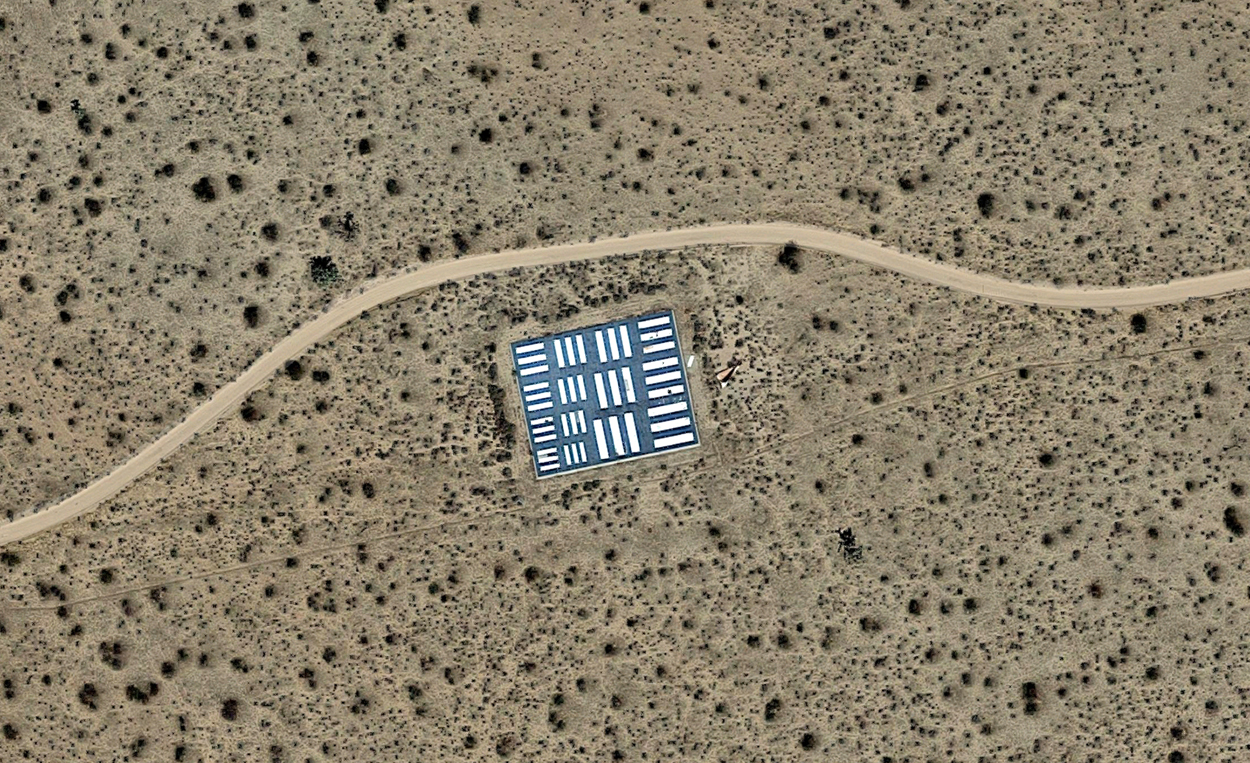
Sometimes old aircraft have been placed near the target as part of the test.
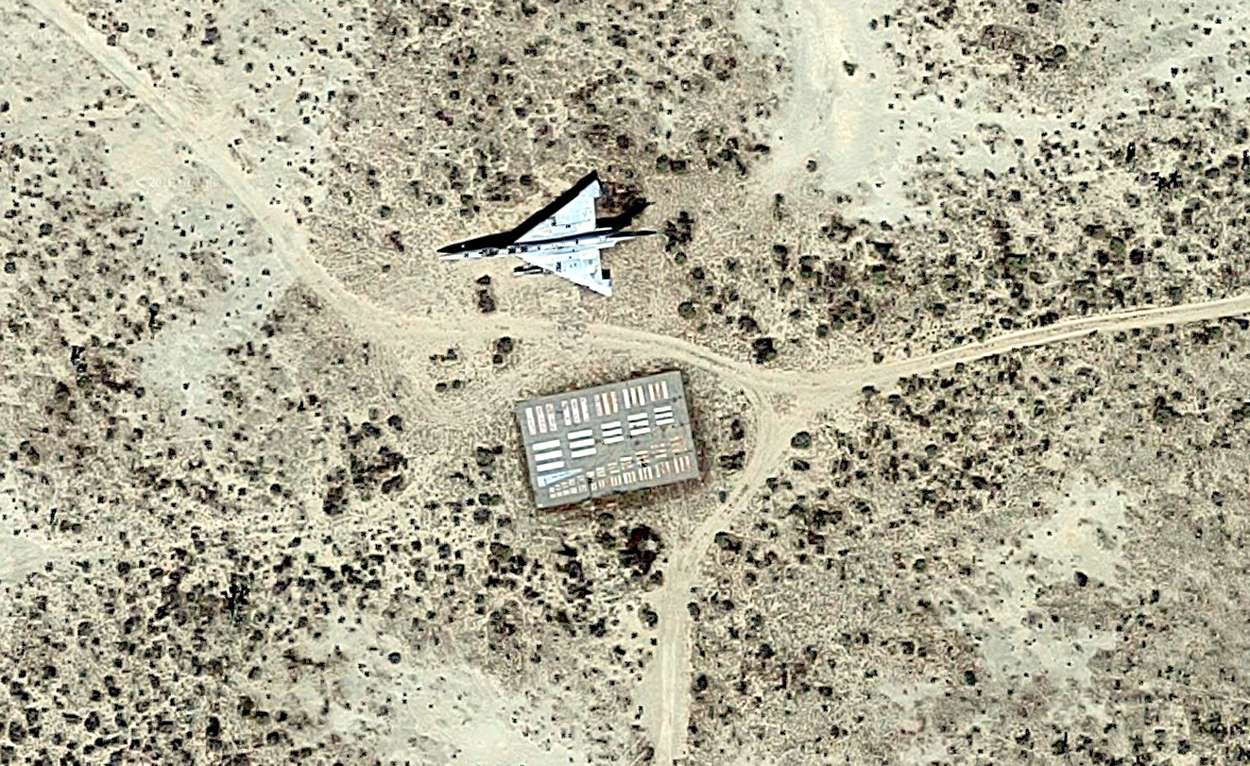
Side note: Edwards also has the world’s largest compass rose, which is 0.76 of a mile in diameter (1.2 km). The other lines on Rogers Dry Lake are runway markings.
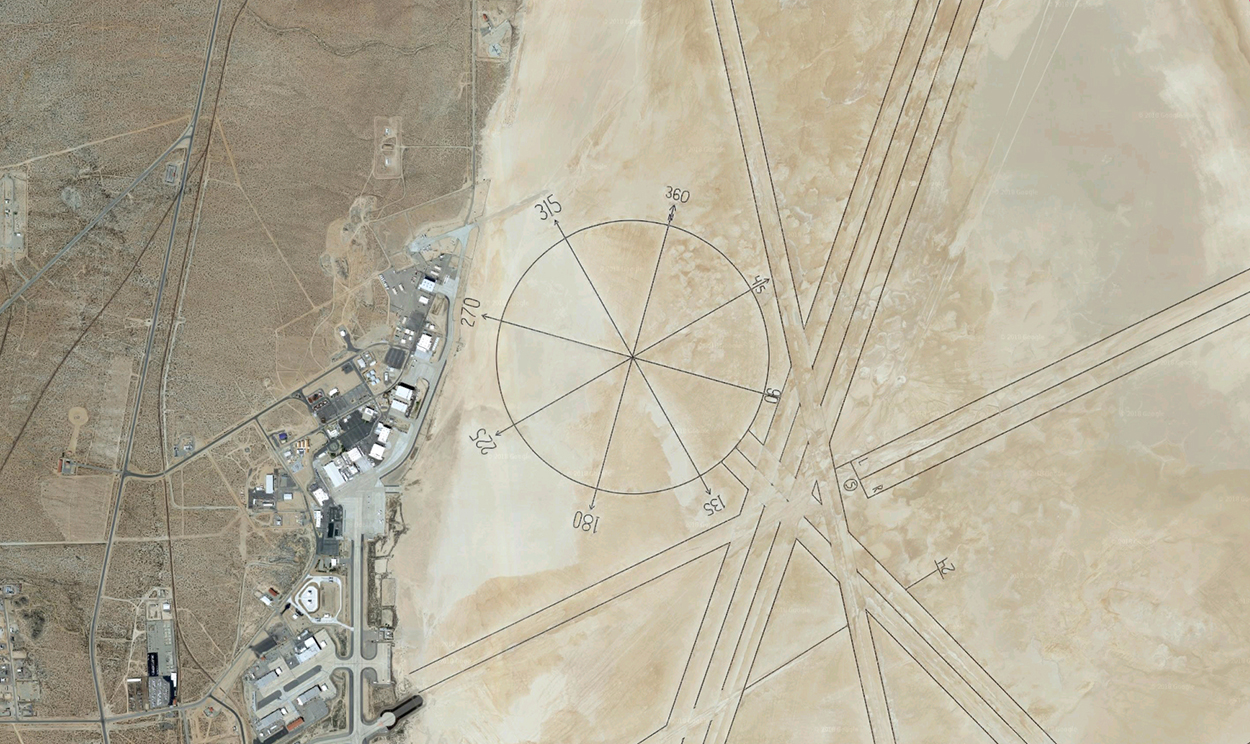
A calibration array at Fort Huachuca in Arizona.
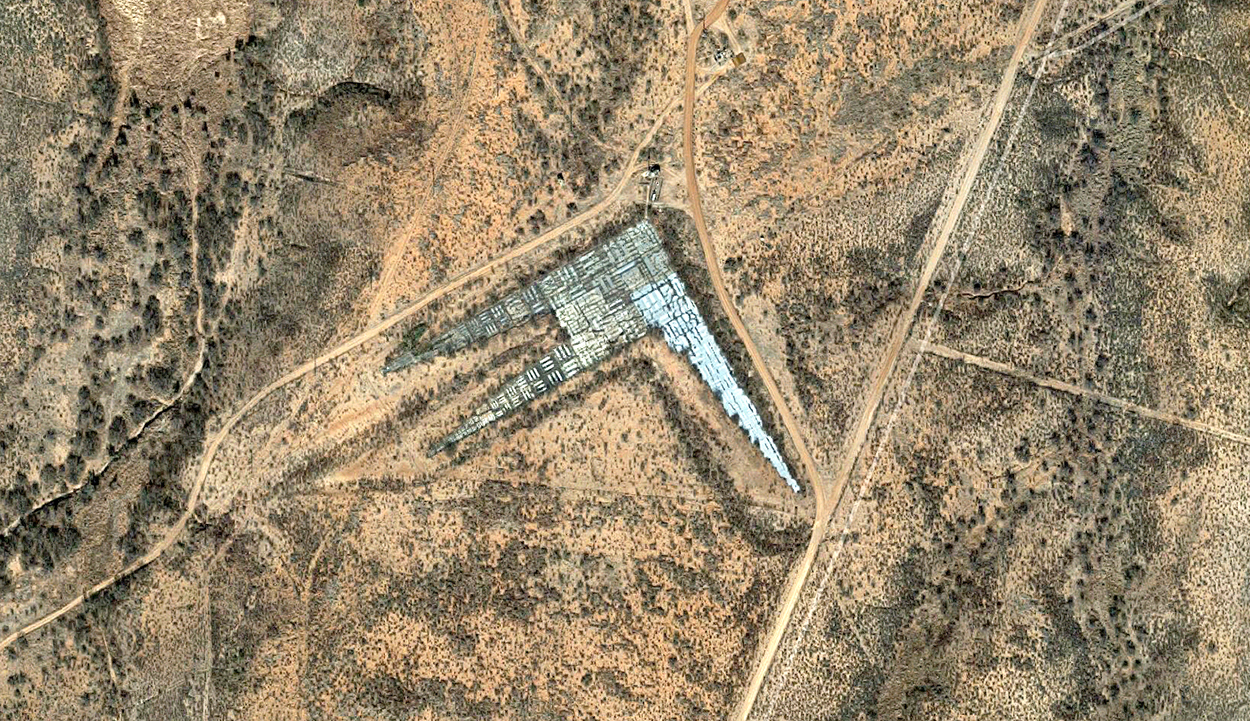
The U.S. targets are based on the 1951 U.S. Air Force Resolution test chart, which is still widely used today to calibrate optical instruments like microscopes, cameras and scanners.
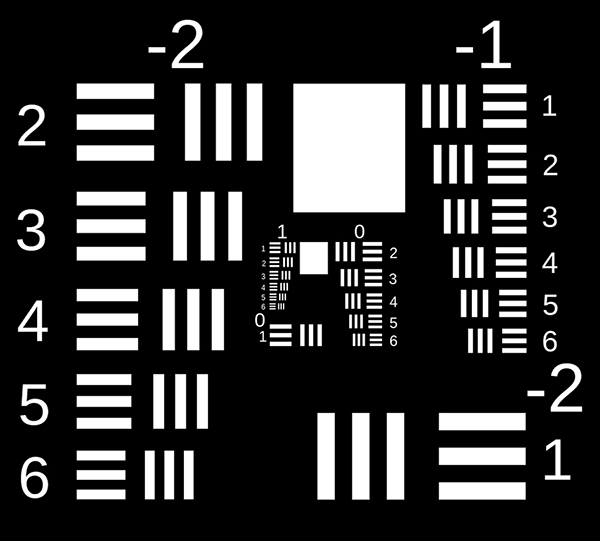
This area of 65-feet-wide (20-meter) reflective lines, in the Gobi Desert, is probably used to adjust the sensors of Chinese spy satellites.
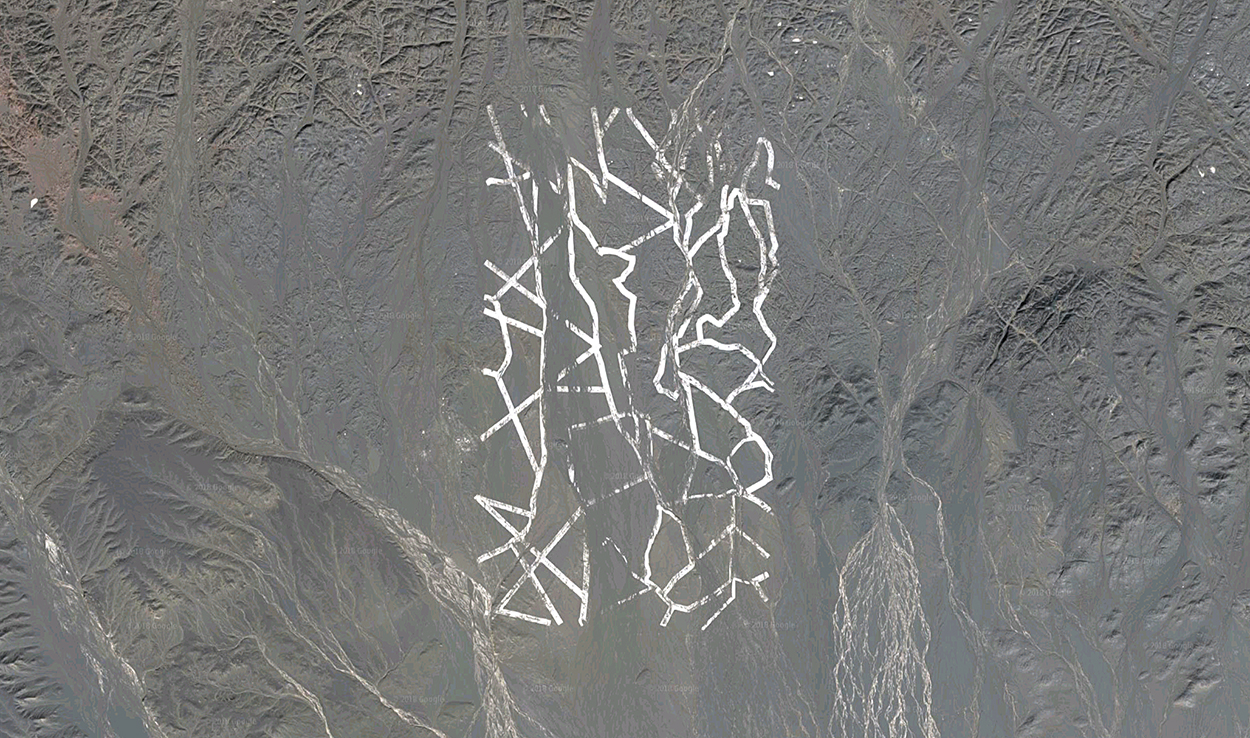
Crosses
272 concrete Maltese crosses were constructed near Tucson, Arizona to help calibrate the cameras on the Corona spy satellites of the 1960s. They form a 16 x16-mile (25.7 km) grid, about a mile (1.6 km) apart. Each cross measures 60 x 60 feet (18.3 meters).
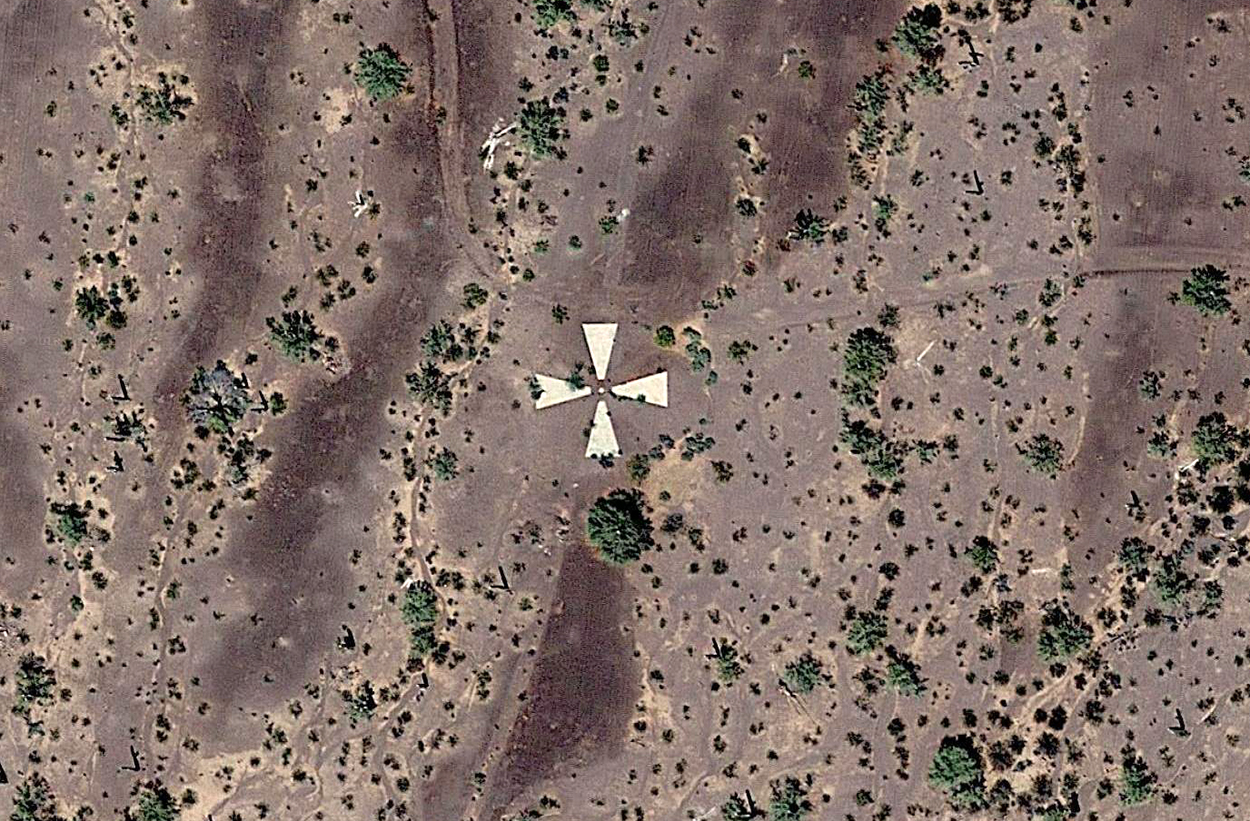
All satellite images: Google Maps.
More than half of these cold-war relics are still in place. The others have been overtaken by development.
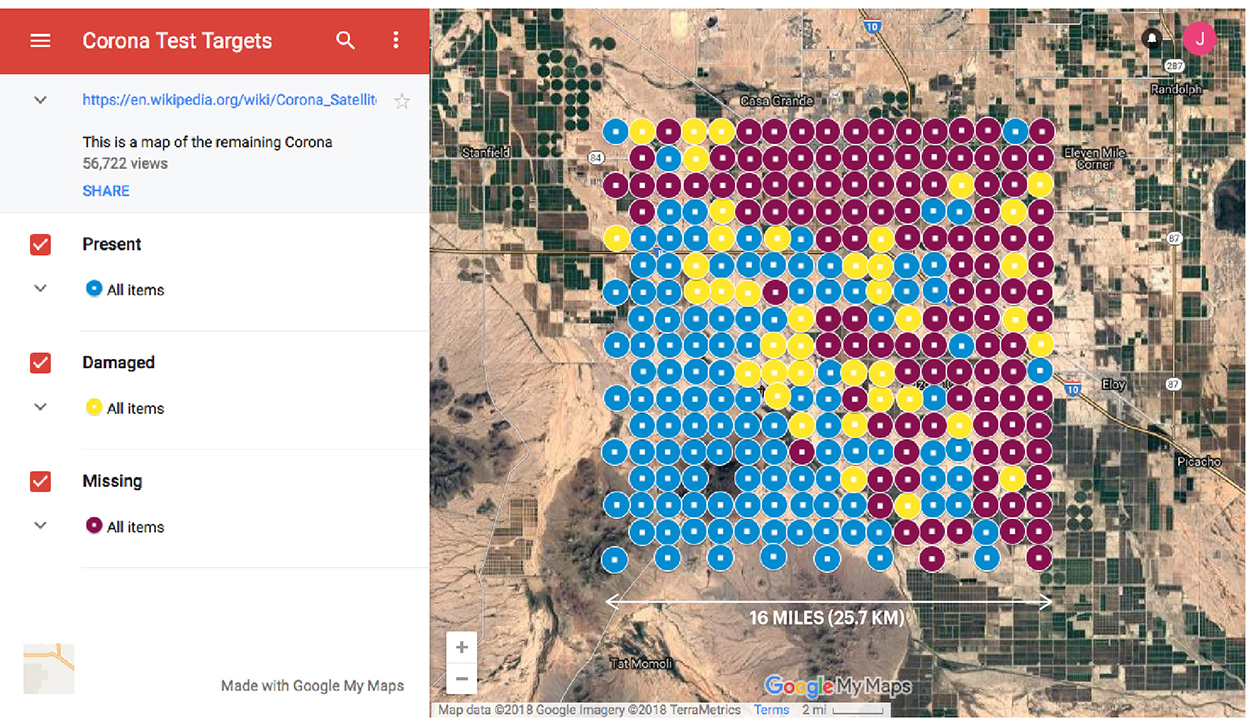
A KH-4B Corona satellite. The film was dropped back to Earth in a capsule which deployed parachutes after reentry, then was picked up by an aircraft as it descended, or retrieved from the sea by the U.S. Navy.

An image of the Pentagon taken by one of the satellites.
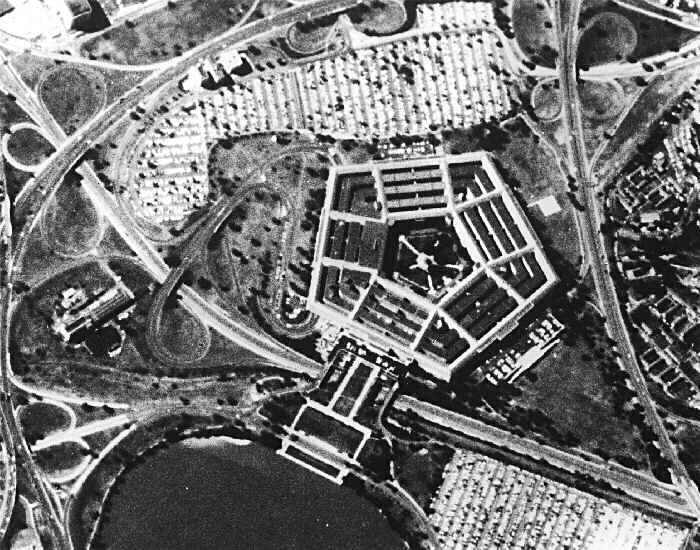
Worldwide
A set of geographic areas have been selected as being optimal for satellite sensor calibration.
https://calval.cr.usgs.gov/rst-resources/sites_catalog/
Some examples of the sites.
